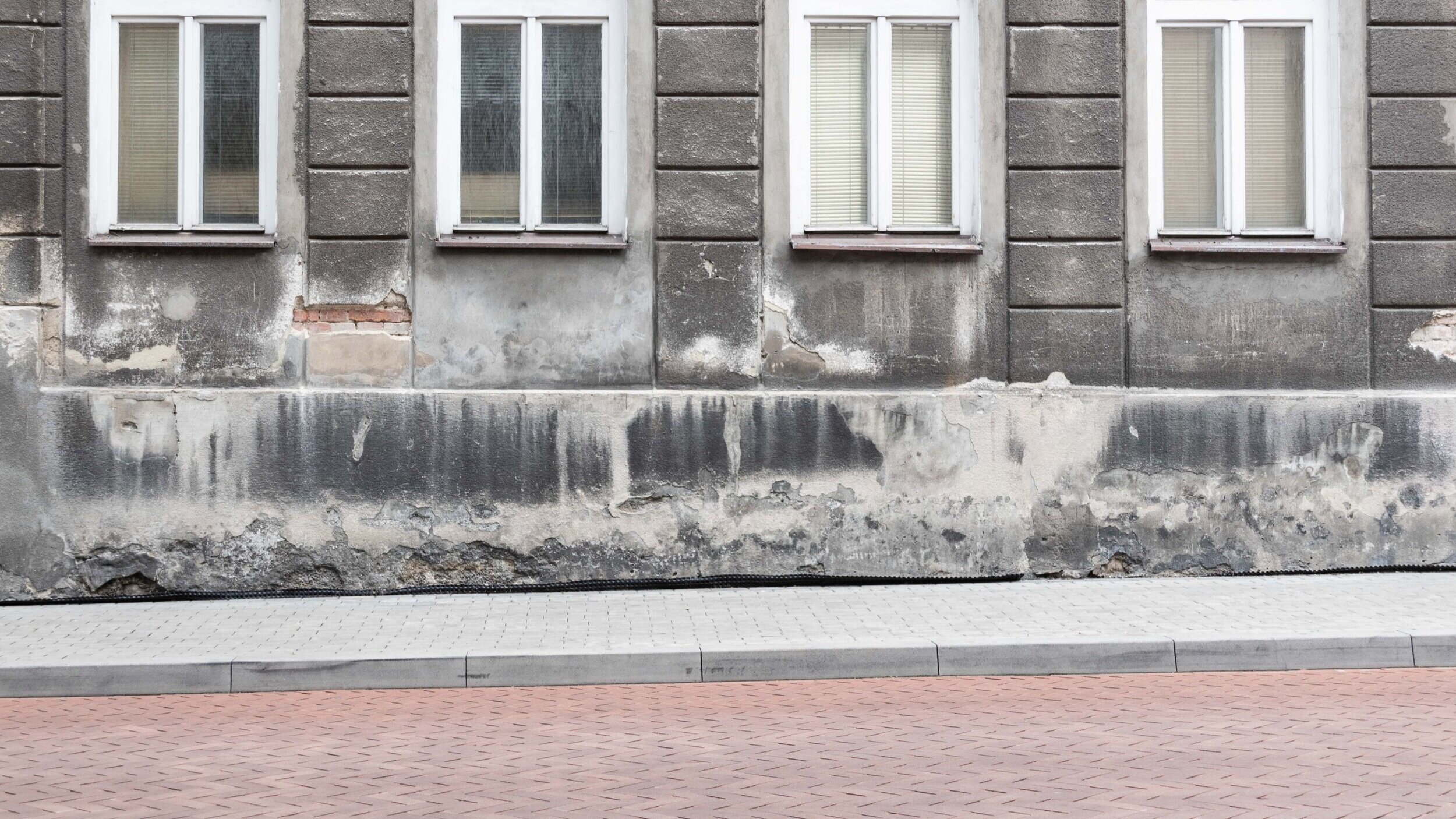
Typical damages / Rising damp
Rising Damp
Rising damp is the transport of moisture from the ground, into the construction and up above ground level by means of capillary forces in porous building materials as brick and mortar. Rising damp can appear on external walls, or even on internal walls, and moisture accumulation can cause damage to the surface treatments and load-bearing elements, e.g. wooden floor slabs.
What to look for
Moisture in the façade can appear as darkened areas/wet spots and when it appears to be provided from below, the cause is likely rising damp. Rising damp can also be seen internally e.g. in basements or walls near ground level.
Risks
Moist areas in façades appear when the porous masonry is in contact with moisture, and absorbs water by capillary forces and due to water pressure. There are several sources from which the water in a moist façade can originate, including;
Ground water, infiltrating water (seepage of surface water through the ground) or damp soil surrounding the foundation or basement walls
Defective piping (either underground plumbing or external drainage systems)
Surface water (precipitation in the case of the terrain being sloped towards the building)
Why it occurs
Porous building materials experiencing high moisture contents and low frost temperatures are at risk for frost damage. If pores in the material are filled with water that freezes and therefore expands, scaling of the outer surface may appear. However, some materials are more frost resistant than others, which depends strongly on the porosity and strength of the material.
Three conditions must be fulfilled for frost damage to occur:
The material must be sufficiently wet
A phase change must occur in the material
The material must be sensitive to frost damage.
Where to look for risks
All areas close to the ground i.e. outside at the plinth, in basements both inside and outside, and in walls at ground level. Mainly in buildings where bricks or natural stones have been used close to or in the ground.
What to do
Rising damp can sometimes be mitigated according to the moisture source; e.g. repair of defective piping and wrongly sloped terrain may alleviate the moisture source, while moisture from damp soil can be reduced by installation of a drainage system on the external side of the walls below ground. In order to prevent moisture from migrating upwards via the pore channels in the construction, physical damp-proof courses (moisture barriers) can be installed in the perimeter of the wall.
Physical moisture barriers can be of steel plates that are vibrated into mortar joints in the depth of the masonry construction if the joints are continuous. It is also possible to saw through the wall thickness, a section at a time, and place either steel sheets or reinforced roofing felt as moisture barrier.










